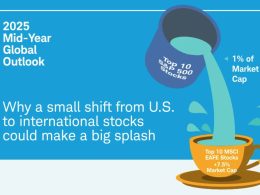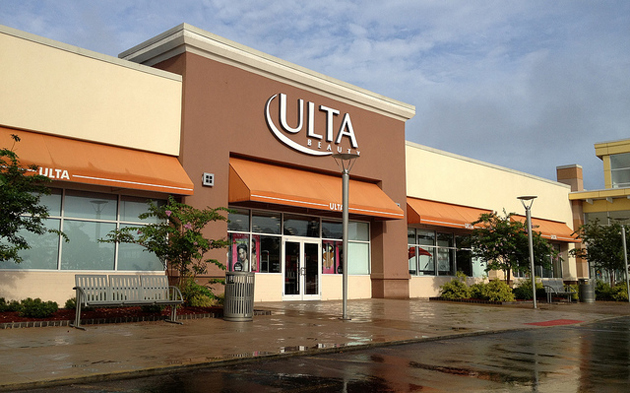WHILE YOU WERE SLEEPING
The U.S. consumer price data is hot off the press and while the headline came in below expected at +0.2% MoM (so much for the PPI being a leading indicator). The real key was the -0.14% print on the core index (which removes food and energy) - deflation in the core CPI is a 1-in-80 event and should be treated seriously in terms of what it means for bond yields and corporate pricing power in the broad retail sector (there were notable declines in recreation, clothing, new car prices, hotels and air fare).
The theme for 2010 is the return of volatility and the appropriate investment strategy is to minimize it through appropriate hedge funds strategies and portfolios that are negatively correlated to risk. Look at what we have on the worry list that we did not have 10 months and 70% ago on the S&P 500:
- China and India tightening credit policy
- The Fed embarking on an exit strategy
- The peak in fiscal stimulus behind us, not ahead of us
- Iran (see today's WSJ editorial)
- Greece (Portugal? Spain?)
- Sovereign default risks
- China selling U.S. treasuries
- Stricter capital rules for banks
MY TAKE ON THE FED
The hike in the discount rate from 0.5% to 0.75% was only a surprise because of the timing, but the Fed had been warning for some time that this was going to be part of the process of taking the emergency stimulus out of the financial system. Ben Bernanke mentioned this at last week's prepared text to Congress and
Wednesday's FOMC meeting contained recommendations from the Fed staff to start raising the discount rate as soon as possible. (We see in today's NYT that former Governor Larry Meyer quipped "don't they [the markets] understand the meaning of soon?" Well, after looking up the word in the dictionary, "soon" was defined as "in the future", not necessarily next week). A whole array of other emergency measures are slated to end in the course of the next month, so yesterday's after-market-closing move in the discount rate is part and parcel of the Fed's long-discussed exit strategy.
Before the crisis intensified in 2008, the normal spread between the discount rate and Fed funds was 100bps, and yesterday it went from 25bps to 50bps. The Fed also reduced the term on discount window loans back to overnight from 28 days - all in an effort to "normalize" policy (notwithstanding how fragile this recovery really is and how abnormal it is to still be over 8 million jobs shy of the former peak at this stage of the policy cycle).
The near-term reaction is predictable with equity futures selling off sharply but this is because Mr. Market has always held the discount rate in high esteem - likely more than it deserves (as we recall that old refrain "three hikes and a stumble"). Also keep in mind that the Fed first cut the discount rate before the market opened back on August 17, 2007, and the Dow rallied 233 points that day. It was hardly the right call and it is very likely the case that the market is over-reacting to yesterday's hike in the opposite direction.
Not that I'm bullish on equities - from my lens, what was far more important in terms of describing the true economic backdrop was what Wal-Mart had to say yesterday in terms of its -1.7% YoY print on Q4 same-store sales (first decline in history and below the flat reading that was expected), not to mention reduced guidance for Q1. The CEO, Mike Duke, bluntly stated that "The economy remains challenged for many of our customers around the world...we expect first-quarter sales in the U.S. will be difficult." Mr. Duke, you may run the largest retailer in the world, but the bubbleheads on television are telling you that you don't know what you are talking about! What else does Wal-Mart represent except that 70% chunk of GDP otherwise known as the American consumer?
If the consumer is "challenged", then how far is an inventory adjustment going to carry along this post-recession recovery. We know, we know - what about the leftover fiscal stimulus out of Washington? Our take: the drag out of the State and local government sector is going to provide a significant offset and the growing opposition to fiscal largesse from the Tea Party movement is going to put a cap on the White House intervention efforts going forward. The situation is so dire that over half of the States are reducing Medicaid services and payments to health care providers to save money (not that we have claimed sainthood, but for economists on CNBC to talk about the wonders of fiscal stimulus when the nation's poorest people are facing budget cuts just doesn't seem appropriate).
Yet Mr. Market was somehow able to ignore the message from Wal-Mart's miss with the Dow rallying over 80 points. (Though yet again, on lower volume - down 6% on the NYSE!) That reaction basically makes as much sense as the dive that initially followed the discount rate increase - in a sign that this is a market that is manic and increasingly volatile.
Not only did the Fed telegraph the move, but the overall impact on bank funding costs is minimal with discount window borrowing at a mere $14.9 billion (a fraction of the pre-crisis levels of $110 billion) and the commercial banks sitting on a $1 trillion cash hoard as it is.
Moreover, the Fed kept on cutting and cutting and cutting rates all the way from August 2007 through to December 2008 and even at microscopic Japanese-like levels, this traditional mode of central bank stimulus still could not manage to put a floor under the economy, let along the markets. Only when the Fed began to treat this as a credit cycle as opposed to a liquidity cycle by rapidly expanding its balance sheet through quantitative easing measures did the turnaround in most economic indicators and investor confidence turn around.
So, it would stand to reason that the real test for the markets is going to come not from the discount rate, but by what happens when the Fed begins to shrink its balance sheet - particularly the ramifications for mortgage rates.
Bear in mind that the Fed in some sense had already been reducing its support by allowing several programs to run their course - the bond-buying program ended about four months ago too. These are all technical moves that symbolize the end to the emergency liquidity provisioning but the central bank is going out of its way to signal that these are not attempts to actually tighten monetary policy. Of course, Bernanke et al are going to have to walk a fine line and for Mr. Market, what defines "extended period" as far as the more important Fed funds rate is concerned is a key question if "before long" - the words Bernanke used to explain when the discount rate would be hiked - meant little more than a week.
All that said changes in the discount rate still can pack a psychological punch, at least in the near-term. Investors will now be reminded that the exit strategy, while gradual, is about to start in earnest. So don't look for a lot of talk going forward of a liquidity-driven market. This could have a dampening impact on the market multiple, as has been the case in China where two moves this year to raise reserve requirements have knocked the Shanghai index down by roughly 8%. Those pundits laying claim that what the Fed is doing is great news for the stock market because it is somehow ratification of the view that we are into a sustainable growth phase should heed what has happened in China this year, and also understand that the reason the S&P 500 could muster a 70% rally off the lows of last March in advance of anything beyond 'green shoots' in the economy was in large part because of all this Fed- induced liquidity.
While the initial reaction to the Fed's move may be overdone, we are still at the tip of the iceberg and the one thing Mr. Market does not like is the uncertainty when the game starts to change. I realize that the equity bull market continued well after the first set of policy tightenings in 2004, but credit growth was running rampant then and home prices were skyrocketing - a far cry from today's landscape, especially the fact that bank lending is contracting at a record 15% annual rate at the current time. For all we know, Bernanke is about to pull a 1937-38 premature exit strategy that ultimately leads to a market and economic relapse. That may not be a base-case scenario but the odds of a policy mis-step are still greater than zero.
To be sure, it does look as though the U.S. economy has moved into an expansion phase, but like the markets, it is volatility around the downward trend. This time last year we are seeing -6.4% GDP growth and then by the fourth quarter of 2009 we are at +5.7%. What a swing. It does remind me of Japan, which has experienced no fewer than 12 quarters of 5%+ GDP growth since its bubble burst in 1990 and one-third of these occurred in the initial years after the crisis began. But there have been twice as many quarters with negative growth. Therefore, volatility is the only certainty in the economy following a credit collapse - and the markets as well.
We recall that that the Nikkei enjoyed 230,000 rally points since 1990 and the market is still down 70% from the peak at that time. It's no different for the U.S.A. following the prior credit collapse in the 1930s - the decade saw 20 quarters of 5%+ sequential GDP growth! That's a depression? Of course it was because there were 13 quarters of contractions mingled into those intermittent positive spasms. Real GDP did a bungee jump of 11% in 1934 and yet if memory serves me correctly, the level of economic activity was basically no higher in 1939 than it was in 1929; and because it was deflation and not inflation that predominated in that period (even with the New Deal!) nominal GDP finished the decade with a 13% loss.
It was not until the first quarter of 1941 - with the help of the war effort - that the prior 1929 Q3 peak in nominal economic activity was taken out (despite seven years of massive FDR stimulus and the odd extremely whippy positive GDP quarter). Moreover, the next secular bull market in equities did not begin until 1954 - 25 years after the prior peak. So the message here is to focus on the forest, not the trees ... and to look at an inventory-led 5.7% growth rate in Q4 in the context of wiggles around what is still a fundamental downtrend.
So what does the current backdrop resemble in a modern-day sense? The summer and fall of 2007. Think about it. The S&P 500 has been jerking around on either side of 1,100 for five months now. The 10-year note yield has jumped 20 basis points from the nearby low with hardly any reason outside of negative technicals.
Go back to that period between May and October of 2007, and the S&P was just above or just below the 1,500 mark for over five months. Many didn't know it then, and we should all be taking it into consideration now, but we were in a classic topping formation. Back then, as is the case today, the bond market was getting hit hard with the 10-year note yield surging 50bps, to 5.2%, and the universe of economists and strategists completely bearish on the Treasury market at just the wrong time. What goes around comes around.
Read the summary of today's report here.
Read the complete report here.












